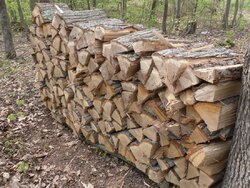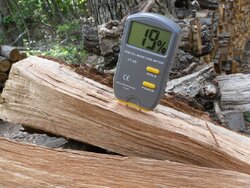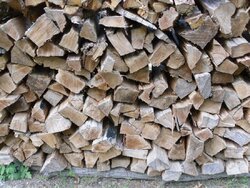rdust said:
Last year I made a post about it with the wood at 20% and BK explained it this way:
"End grain will soak up a lot of water, especially in woods like oak, ash, and hickory that have lots of big, open pores (ring-porous). They’re like thousands of tiny drinking straws that go from end to end inside the split. Ironically, the drier the wood, the faster water can go back in at the ends, but it doesn’t usually go very deep unless the wood has been soaking wet for a period of time. If it’s 20% on the inside, a little sizzle on the ends ain’t killing the deal. I’m convinced that half the complaints about oak sizzling are caused by end-grain absorption of water after it is seasoned."
For the record, I was talking about 20% water by weight, not 20% MC on a meter. Old Spark is talking about 25% on the meter, so that is wetter than stuff you measured at 20%. At 20% on the meter, your wood was in fact only 16% water by weight... even less if you consider that the average MC throughout the split is somewhere between the inside measurement and the outside measurement.
I think I showed that pretty convincingly in the "Denniswood" thread. His wood measured 28% MC inside, but the oven-dry method proved it was only 18% water by weight for the entire split after 100% of the water had been driven out. For that reason, I recommend taking both inside and outside readings, correcting both readings for species (using a table from a pro-grade meter), and averaging them. Using just the inside reading doesn't really tell you much about the entire split.
Ya know, I would never have used the terms "wet-basis" and "dry-basis" on this board if it weren't for all the folks relying on meters to tell their MC but failing to know what they really tell you. It's has
always been the rule within the wood heating industry that <20% water by weight is the ideal MC, and that advise is still sound, but that means it will read 25% MC on the meter. Just no getting around it, that's simply the way they work.
BTW DWH, the 34% MC meter reading on your red oak tells you that it is only 25% water by weight. And another thing about red oak... it need no species correction on the meter reading. It has the same electrical resistivity as Doug fir, the wood they use as the standard for the meters.






